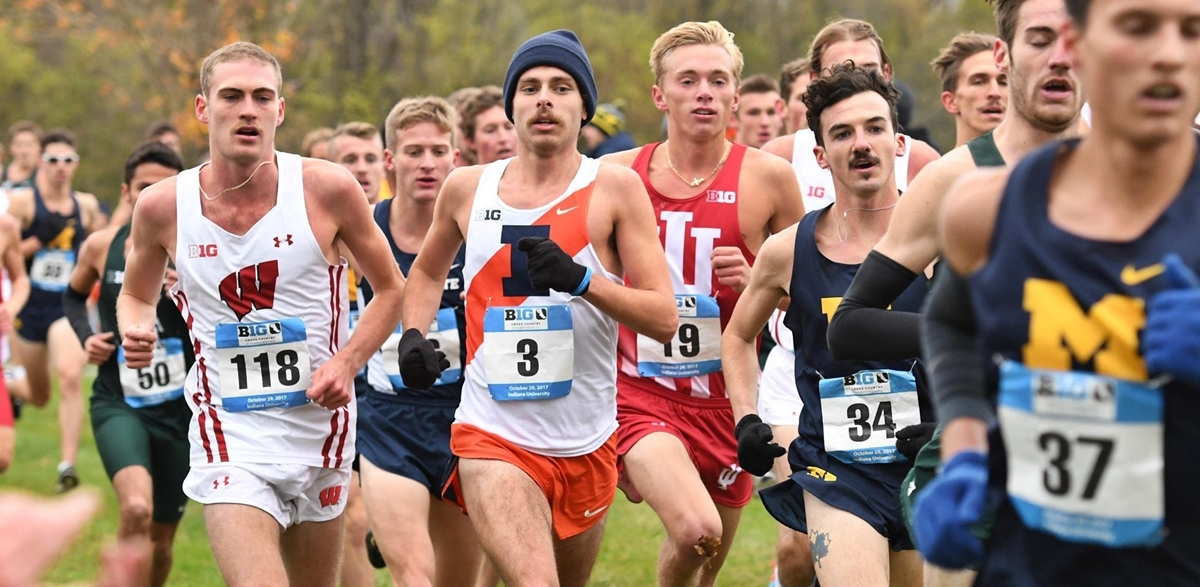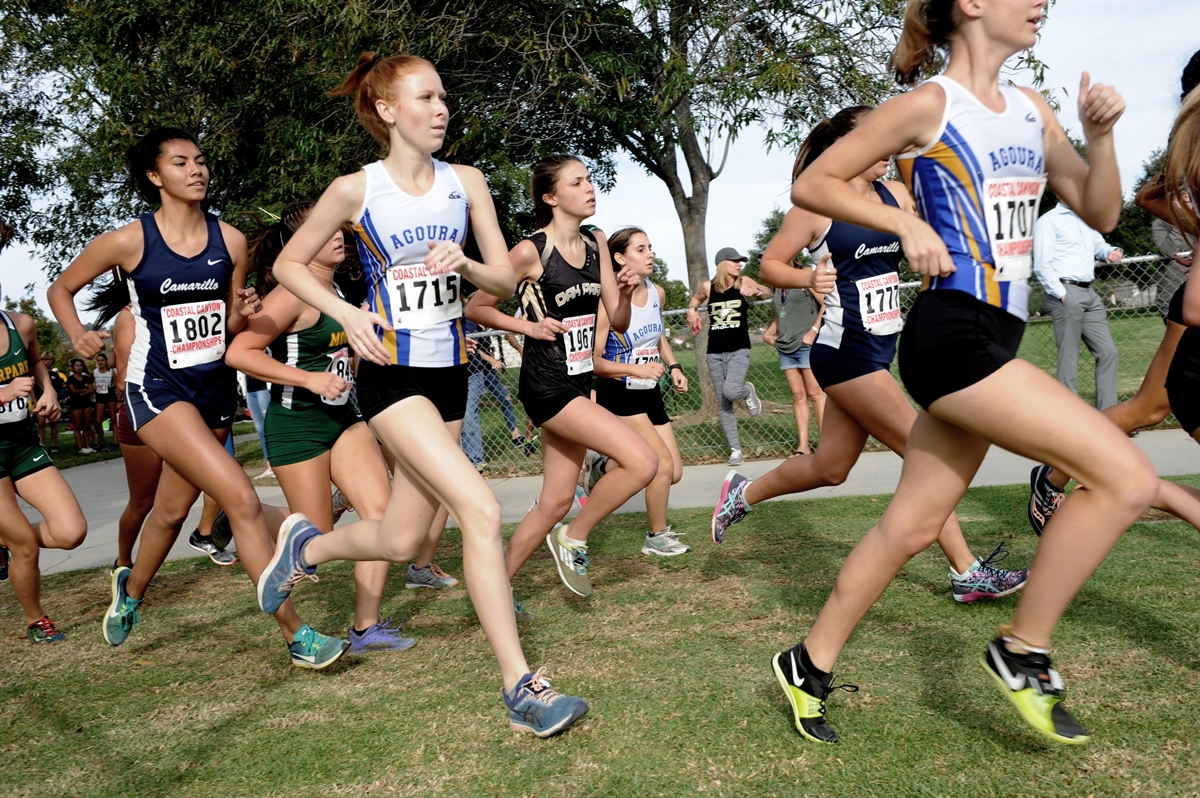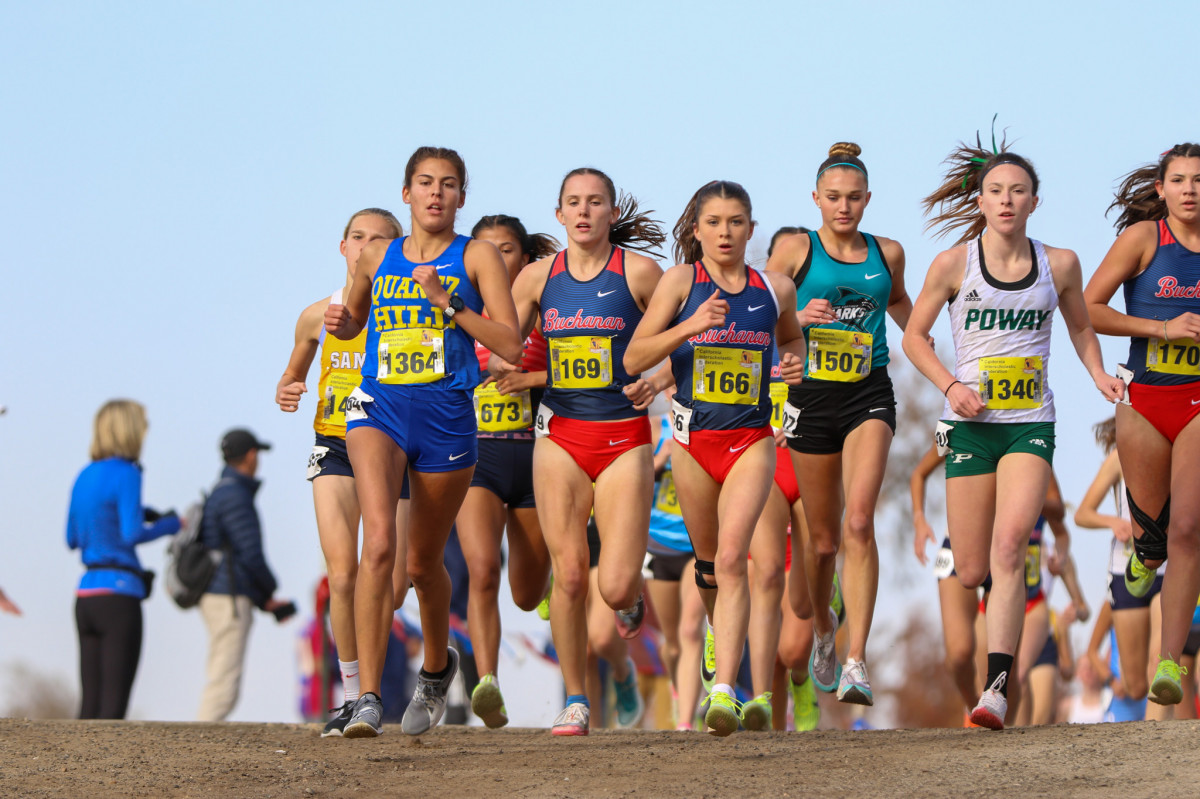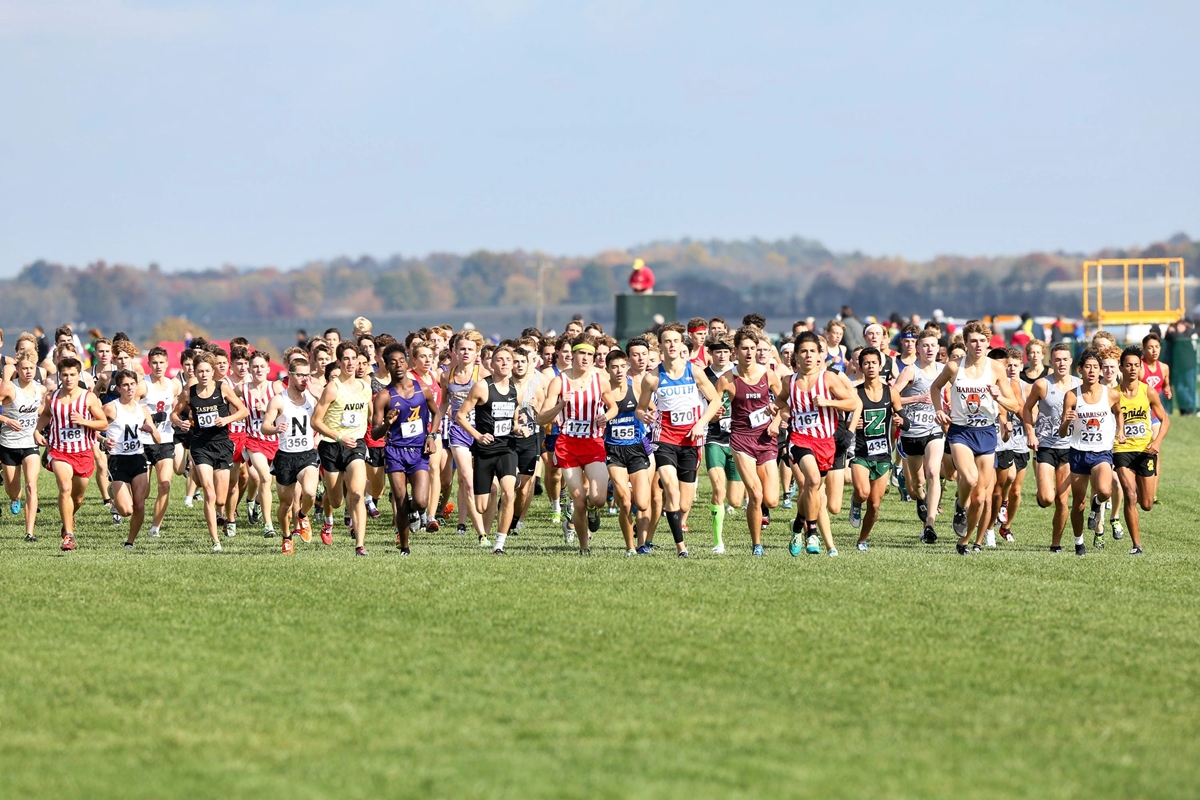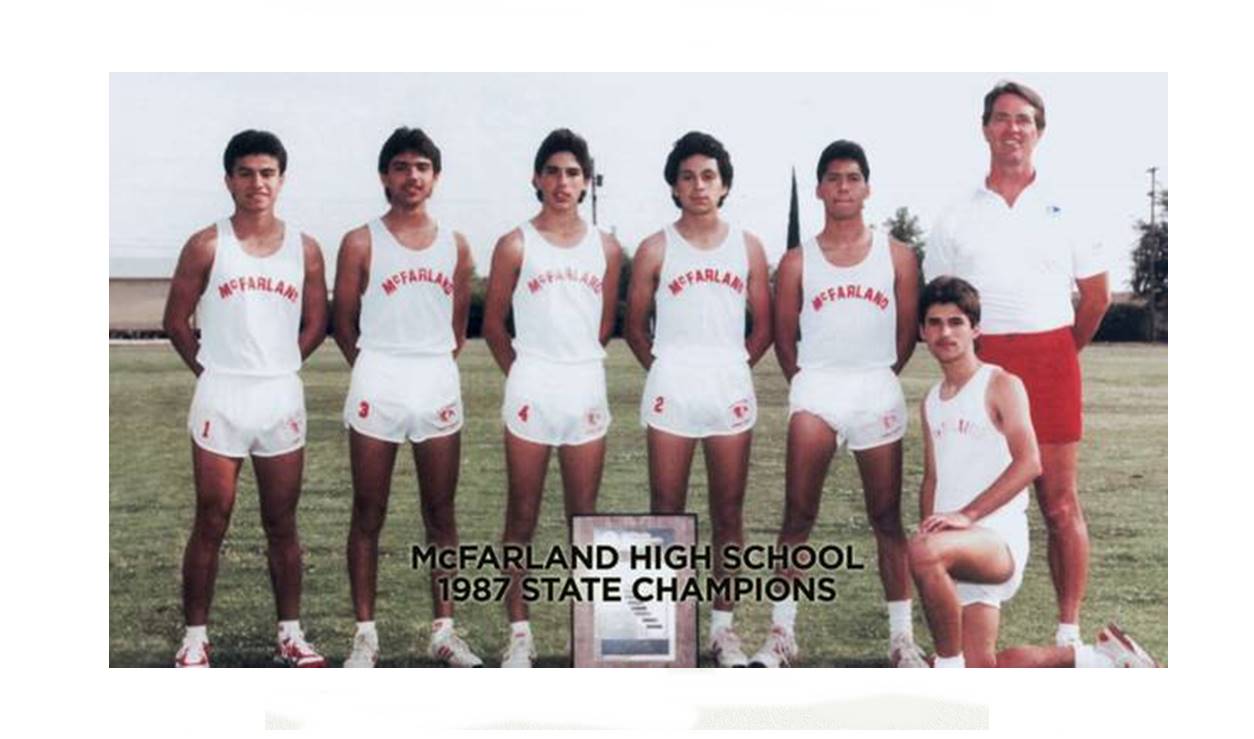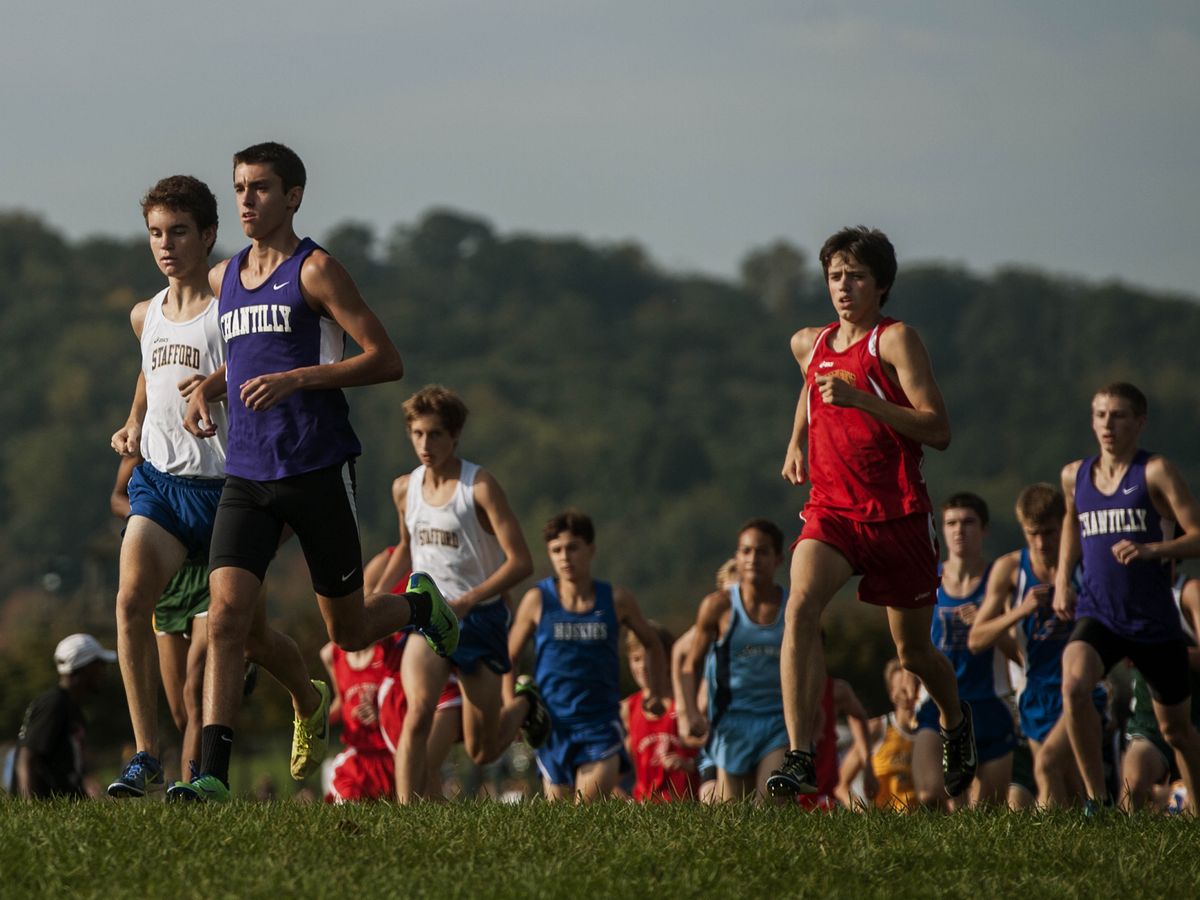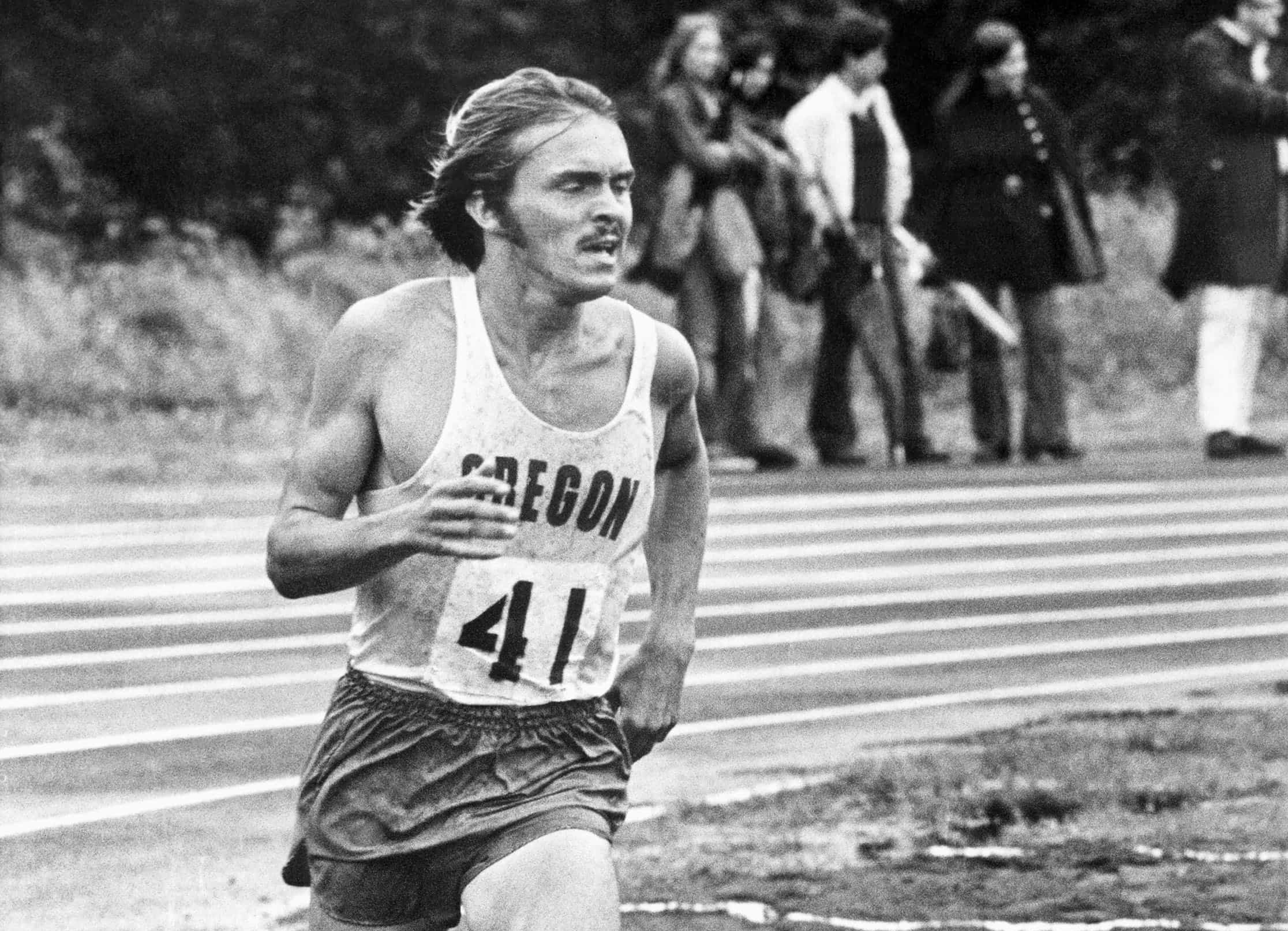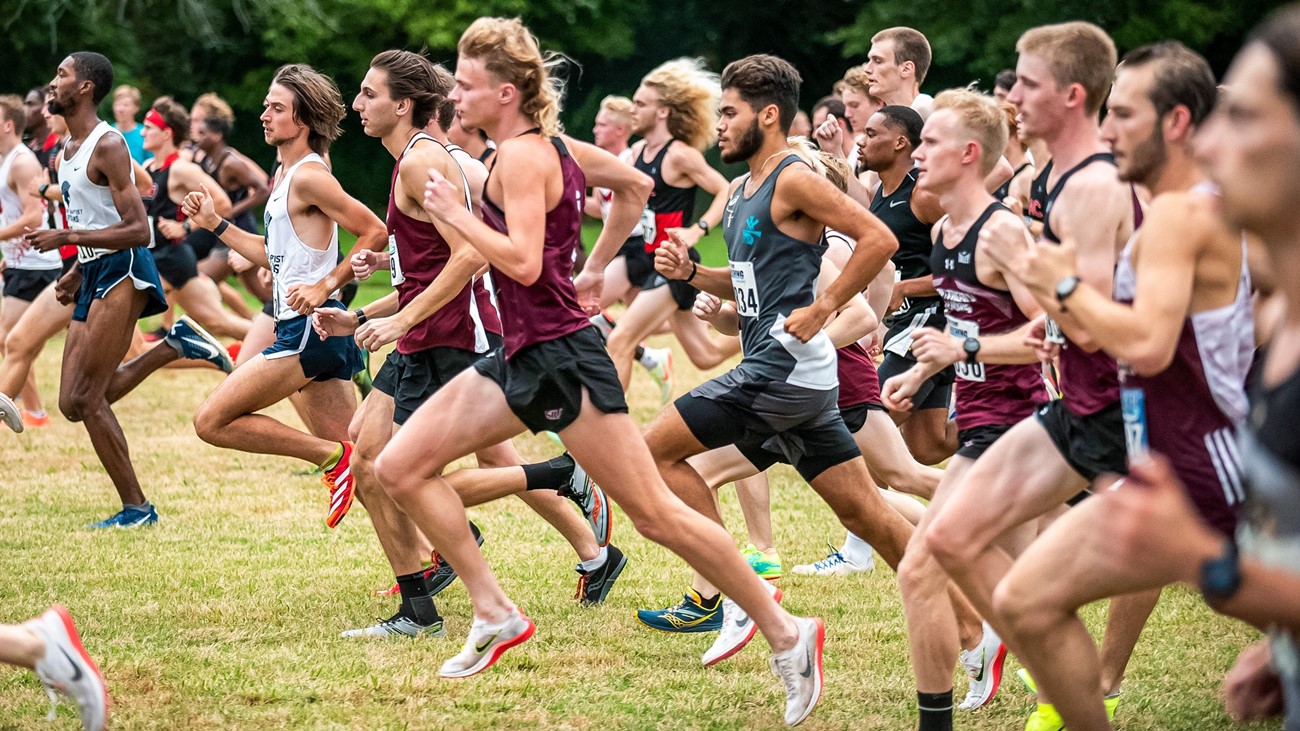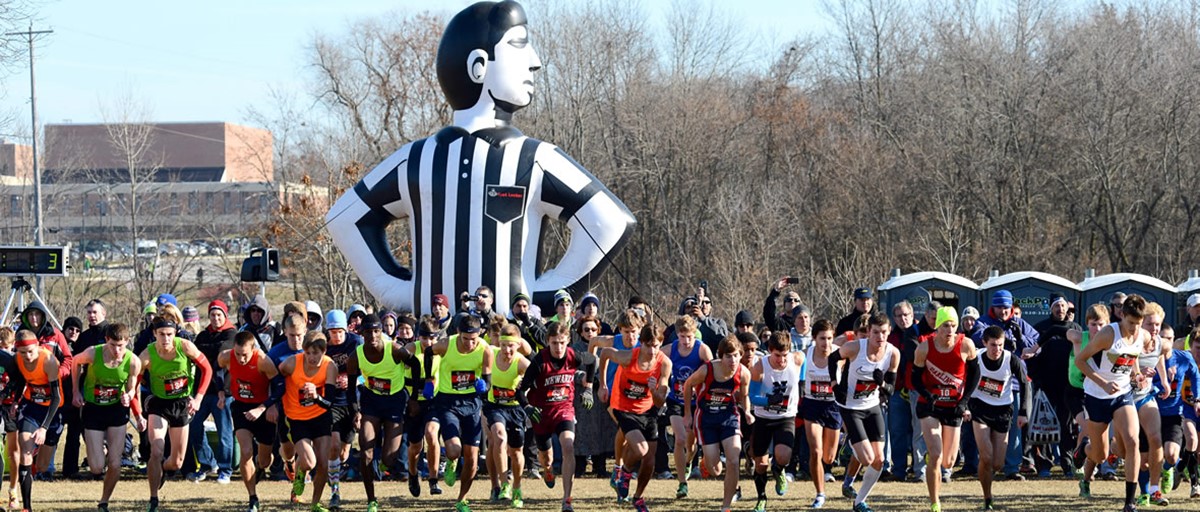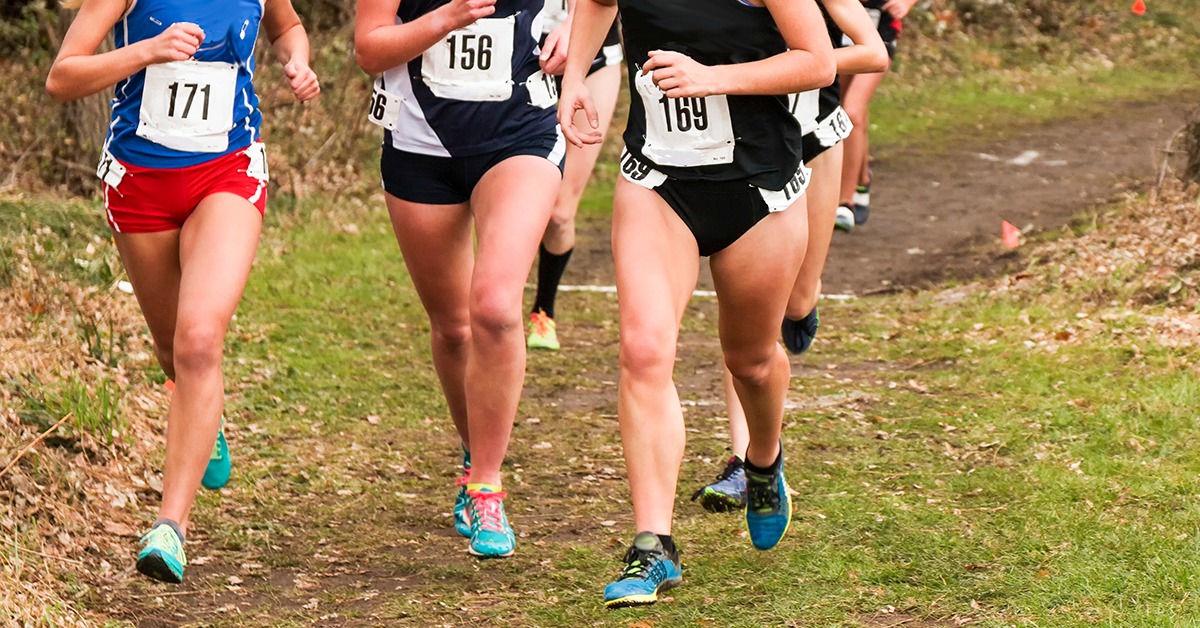

Featured
What Is Cross Country In High School
Modified: January 22, 2024
Discover the benefits and challenges of participating in high school cross country. Get insights on training, competitions, and why it's a featured sport for athletes.
Introduction
Cross country is a popular sport in high schools across the United States, combining endurance, skill, and determination. It involves running long distances over natural terrains such as grass, trails, and hills. This challenging sport requires athletes to push themselves to their limits, both physically and mentally, as they navigate through various obstacles and strive to achieve personal and team goals.
With its origins dating back to the early 19th century, cross country has evolved into a competitive sport widely recognized in high schools today. It offers a unique experience that fosters not only physical fitness but also camaraderie, discipline, and a strong work ethic.
Understandably, cross country may not be as well-known as other mainstream high school sports like football or basketball, but its popularity has been steadily increasing over the years. Students who participate in cross country often find themselves immersed in a supportive community where they can improve their running abilities, develop valuable life skills, and create lasting memories.
In this article, we will explore the history, rules, benefits, challenges, and opportunities related to cross country in high school. Whether you are a student considering joining a cross country team, a parent supporting your child’s athletic endeavors, or simply curious about this exhilarating sport, this article will provide you with a comprehensive insight into the world of high school cross country.
History of Cross Country in High School
The roots of cross country can be traced back to the early 19th century in England, where it was primarily seen as a form of military training. It was introduced in high schools in the United States around the late 19th century, with the first interscholastic cross country race held in 1903.
Initially, cross country was predominantly a male sport, but in the 1960s, girls’ cross country teams started to emerge, gaining recognition and popularity. Since then, cross country has evolved into a sport that is open to both male and female athletes in high schools across the country.
Over the years, cross country has undergone various changes and adaptations. Distances for races have standardized, with 5 kilometers (3.1 miles) being the typical distance for high school races. The sport has also become more structured, with formalized rules and regulations to ensure fair competition.
One significant development in the history of high school cross country is the establishment of governing bodies, such as the National Federation of State High School Associations (NFHS) and state athletic associations. These organizations oversee the sport, set guidelines, and organize competitions, including regional and state championships.
High school cross country has gained recognition as not only a challenging sport but also a platform for personal and team achievements. Athletes compete individually for their own race times, but their results also contribute to their team’s overall score. The team with the least amount of points wins the meet.
Throughout its history, cross country has produced exceptional athletes who have gone on to achieve success at higher levels of competition, such as collegiate and professional running. Many high school cross country programs have served as a stepping stone for aspiring athletes to pursue their athletic dreams.
Rules and Regulations
Like any organized sport, high school cross country follows specific rules and regulations to ensure fair competition and the safety of athletes. Here are some key rules and regulations governing high school cross country:
-
Course Layout: Cross country courses are typically set on natural terrains, including fields, trails, and wooded areas. The course length for high school races is usually 5 kilometers (3.1 miles), although it may vary depending on the event or level of competition. The course may include various obstacles such as hills, mud, or water crossings to add to the challenge.
-
Starting Line and Starting Procedures: The starting line is marked, and athletes line up behind it. The starting procedures may vary, but typically, a starter gun or whistle signals the beginning of the race. Athletes must not leave the starting line until the starting signal is given.
-
Marking and Penalties: The course is marked with flags, cones, or tape to help athletes follow the correct route. Deviating from the marked course may result in penalties, such as time deductions or disqualification.
-
Athlete Conduct: Athletes are expected to conduct themselves in a sportsmanlike manner throughout the race. Unsportsmanlike behavior, such as pushing, tripping, or interfering with other runners, can result in disqualification.
-
Scoring: In cross country, teams compete based on a scoring system. Typically, the top five finishers from each team contribute to their team’s score. The team with the lowest total score wins the meet.
-
Uniforms and Equipment: Athletes are required to wear appropriate uniforms and footwear during races. The uniforms must adhere to the rules set by the state’s athletic association or the NFHS. Athletes may also use certain equipment, such as timing devices, but these must comply with the regulations.
It is essential for athletes, coaches, and officials to familiarize themselves with the specific rules and regulations of their state or district’s athletic association to ensure compliance and fair play.
Benefits of Participating in High School Cross Country
Participating in high school cross country offers numerous benefits that extend beyond physical fitness. Here are some of the key advantages of being a part of a cross country team:
-
Improved Physical Fitness: Cross country is a demanding sport that promotes overall physical fitness. Regular running, endurance training, and conditioning help athletes develop cardiovascular strength, stamina, and muscular endurance. This leads to improved overall fitness and a healthier lifestyle.
-
Mental Resilience: Cross country requires not only physical strength but also mental resilience. Athletes learn to push through challenges, manage discomfort, and maintain focus even during intense races. This mental toughness translates into other areas of life, helping athletes develop perseverance and determination.
-
Teamwork and Camaraderie: Cross country provides an opportunity for athletes to be part of a team. Training together, supporting one another, and working towards a common goal fosters a sense of camaraderie and teamwork. Athletes develop strong bonds and learn the value of collaboration and support.
-
Goal Setting and Personal Growth: Cross country encourages athletes to set and strive for personal goals. Whether it’s improving race times or achieving a personal best, the sport cultivates a mindset of continuous growth and improvement. This mindset extends beyond the running track and prepares athletes for success in other areas of life.
-
Time Management and Discipline: Balancing academics, training, and other commitments requires strong time management skills. Cross country teaches athletes to prioritize tasks, manage their time effectively, and develop discipline. These skills are transferable to academic and professional settings.
-
Character Development: Cross country cultivates positive character traits such as resilience, perseverance, determination, and sportsmanship. Athletes learn to handle both success and setbacks with grace and humility. These qualities contribute to the overall development of a well-rounded individual.
-
College Opportunities: High school cross country can open doors to college opportunities. Outstanding performances in cross country may attract the attention of college coaches and scouts, leading to potential scholarships or opportunities to compete at the collegiate level.
Participating in cross country not only enhances physical fitness but also instills life skills that benefit athletes in various aspects of their lives. It provides a platform for personal growth, teamwork, and the development of important character traits.
Training and Preparation
Training and preparation are essential components of high school cross country. Proper training helps athletes build endurance, improve performance, and reduce the risk of injuries. Here are key elements of training and preparation in cross country:
-
Running: Running is the core component of cross country training. Athletes engage in regular distance runs to build endurance and increase their aerobic capacity. They also incorporate different types of runs, such as tempo runs, interval training, hill repeats, and long runs, to improve speed, strength, and stamina.
-
Strength Training: Cross country runners also incorporate strength training into their routine. This includes exercises such as squats, lunges, core exercises, and upper body workouts. Strength training helps develop overall body strength, stability, and injury prevention.
-
Flexibility and Mobility: Stretching, mobility exercises, and yoga are important for maintaining flexibility and range of motion. These activities help prevent muscle tightness and improve running form.
-
Nutrition and Hydration: Proper nutrition and hydration play a crucial role in cross country training. Athletes need to consume a balanced diet that includes carbohydrates for energy, protein for muscle repair, and healthy fats for overall health. Staying hydrated before, during, and after workouts and races is also vital.
-
Rest and Recovery: Rest and recovery are integral parts of training. Athletes need time for their bodies to recover and adapt to the physical demands of running. Getting sufficient sleep, taking rest days, and incorporating active recovery activities, such as swimming or cycling, help prevent burnout and reduce the risk of overuse injuries.
-
Mental Preparation: Cross country racing requires mental fortitude. Athletes practice mental strategies, such as visualization, goal-setting, and positive self-talk, to enhance focus, confidence, and mental resilience.
-
Coaching and Support: Having a knowledgeable coach who provides guidance, training plans, and feedback is crucial for the development of cross country athletes. Coaches help create structured training schedules, monitor progress, and offer support throughout the season.
Training and preparation for high school cross country require dedication, discipline, and consistency. By incorporating these elements into their routine, athletes are better equipped to perform at their best and achieve their goals on race day.
Competitions and Championships
Competitions and championships are the culmination of the hard work and training put in by high school cross country athletes. These events provide an opportunity for athletes to showcase their skills and compete against other teams and individuals. Here’s an overview of the competitive aspect of high school cross country:
-
Meets: Throughout the cross country season, teams participate in various meets. Meets can be dual meets, where two teams compete against each other, or invitational meets, which involve multiple teams. These meets serve as a platform for athletes to gauge their progress, race against different competitors, and strive for personal and team bests.
-
Regional Championships: At the end of the regular season, regional championships take place to determine which teams and individuals will advance to the state championships. These championships are typically organized by the state’s athletic association and bring together the top teams and runners from each region.
-
State Championships: State championships are the pinnacle of the high school cross country season. Teams and individuals who qualify from the regional championships compete for the state title in their respective divisions. These championships showcase the best runners in the state and generate excitement and camaraderie among athletes.
-
National Championships: For exceptional athletes, there are opportunities to compete in national cross country championships. These events bring together top runners from across the country to compete at the highest level. The Nike Cross Nationals (NXN) and Foot Locker Cross Country Championships are two prestigious national competitions in high school cross country.
-
Team and Individual Awards: At these championships, teams compete for both individual and team awards. Individual awards recognize the top finishers in each race, while team awards celebrate the collective efforts of the athletes. Winning a team championship or earning individual accolades is a testament to the hard work and dedication of the athletes and the coaching staff.
Competing in cross country championships is an exhilarating experience for high school athletes. It allows them to demonstrate their skills, witness the talent of other dedicated runners, and create lasting memories of their high school cross country journey.
Cross Country Teams and Tryouts
Cross country teams in high schools provide a supportive and competitive environment for athletes to pursue their passion for running. Joining a cross country team offers several benefits, including camaraderie, accountability, and the opportunity to improve as a runner. Here’s an overview of cross country teams and the tryout process:
-
Team Structure: Cross country teams typically consist of athletes from various grade levels. Some schools may have separate teams for boys and girls, while others may have co-ed teams. The team is led by a coach who designs training plans, provides guidance, and helps athletes develop their skills and reach their full potential.
-
Tryouts: In most high schools, cross country teams conduct tryouts to determine the athletes who will make the team. Tryouts may include a series of running evaluations, such as time trials or distance runs, to assess a runner’s speed, endurance, and overall fitness level. Coaches look for athletes who demonstrate dedication, a strong work ethic, and the potential for improvement.
-
Factors Considered in Tryouts: Coaches consider various factors during tryouts, including race times, previous running experience, endurance, coachability, and attitude. They are also mindful of creating a well-balanced team that can compete effectively in races at the varsity, junior varsity, and freshman levels.
-
Team Atmosphere: Cross country teams foster a supportive and inclusive atmosphere. Teammates train together, support each other during races, and celebrate individual and team achievements. The bonds formed within the team can create lifelong friendships and a sense of belonging.
-
Team Commitment: Once selected for the team, athletes are expected to make a commitment to attend practices, races, and team events. Regular attendance and active participation are crucial for individual improvement and team cohesion.
-
Development and Improvement: Being part of a cross country team provides athletes with opportunities for growth and improvement. Through consistent training, guidance from coaches, and support from teammates, athletes can enhance their running ability, endurance, and race strategies.
-
Opportunities for Progression: Cross country teams offer opportunities for athletes to progress and compete at higher levels. Athletes who demonstrate exceptional talent and dedication may have the chance to move up to higher-tier teams, represent their school at regional and state championships, and pursue collegiate running opportunities.
Participating in a cross country team allows athletes to be part of a close-knit community, improve their running skills, and experience the thrill of competitive racing. It is an excellent avenue for personal growth and achieving athletic goals.
Challenges and Obstacles in Cross Country
Cross country, like any sport, presents unique challenges and obstacles that athletes must overcome. These challenges, although demanding, contribute to the growth and character development of cross country runners. Here are some of the common challenges and obstacles faced in cross country:
-
Physical Demands: Cross country requires athletes to push their bodies to their limits. Endurance, speed, and mental toughness are tested during long-distance races over varied terrains. Dealing with fatigue, muscle soreness, and potential injuries are physical challenges runners must overcome.
-
Mental Resilience: Cross country races can be mentally exhausting. Athletes need to maintain focus, overcome self-doubt, and push through mental barriers. The ability to stay positive, motivated, and determined during challenging runs and races is crucial to achieving success in cross country.
-
Weather Conditions: Cross country races are held in various weather conditions, including heat, rain, and cold temperatures. Adapting to adverse weather conditions and remaining physically and mentally prepared can be challenging for runners.
-
Terrain and Course Challenges: Courses in cross country races can present various challenges, such as steep hills, muddy patches, and uneven terrain. Navigating through these obstacles requires agility, balance, and stamina. Runners need to adapt to the course conditions and adjust their strategies accordingly.
-
Time Management: Balancing academics, training, and other commitments can be demanding for student-athletes. Finding the right balance and managing time effectively to prioritize training while maintaining academic performance can be a significant challenge.
-
Peer Competition: Cross country races involve competing against other talented runners, both individually and as a team. The level of competition can be intense, and athletes must strive to improve their race times and performance to stay competitive and contribute to their team’s success.
-
Injuries: Like any high-impact sport, cross country comes with the risk of injuries. Common injuries in cross country include shin splints, stress fractures, sprained ankles, and muscle strains. Proper training, warm-ups, strength conditioning, and rest are essential for injury prevention and recovery.
Overcoming these challenges requires dedication, perseverance, and the support of teammates and coaches. By facing and overcoming these obstacles, cross country runners develop resilience, determination, and a strong work ethic that can positively impact their lives both on and off the course.
Cross Country and College Athletic Scholarships
Cross country can provide opportunities for high school athletes to pursue college education through athletic scholarships. College athletic scholarships not only recognize the athletic abilities of cross country runners but also help alleviate the financial burden of higher education. Here’s an overview of cross country and college athletic scholarships:
-
Recruitment Process: College coaches actively recruit cross country runners who demonstrate exceptional talent and potential. They evaluate race times, performance in competitive meets, and consistency in training. Coaches also consider the athlete’s commitment, work ethic, and coachability.
-
Athletic Ability: To be considered for a cross country scholarship, athletes need to compete at a high level and consistently achieve impressive race times. College coaches are typically looking for runners who can make an impact on their teams and contribute to their success in intercollegiate competition.
-
Academic Performance: While athletic ability is important, academic performance also plays a significant role in the recruitment process. Student-athletes must meet eligibility requirements set by the National Collegiate Athletic Association (NCAA) and attain a certain GPA to be considered for scholarships.
-
Scholarship Opportunities: Scholarships can vary in terms of financial coverage and the number of scholarships available. Full scholarships provide coverage for tuition, room and board, books, and other expenses. Partial scholarships may cover a portion of these costs. Additionally, there are merit-based scholarships, need-based scholarships, and athletic aid that can be offered to student-athletes.
-
Building a Recruitment Profile: To increase their chances of receiving a cross country scholarship, athletes should create a recruitment profile that showcases their running accomplishments, academic achievements, and personal information. Including race times, training highlights, and contact information can help coaches assess the athlete’s potential.
-
College Visits: Visiting colleges and getting in touch with the coaching staff can provide valuable insights into the program, training facilities, and academic offerings. It also allows athletes to understand the expectations and requirements of the college cross country team.
-
Commitment and Responsibility: Receiving a cross country scholarship entails a commitment to both academics and athletics. Athletes must maintain their eligibility and balance the demands of training, competition, and academic responsibilities throughout their college career.
Securing a cross country scholarship requires dedication, hard work, and a proactive approach to the recruitment process. It is important for student-athletes to research schools, reach out to coaches, and showcase their abilities through competitive performances and academic excellence.
Conclusion
High school cross country offers students a unique and rewarding experience that goes beyond the physical challenges of running. It is a sport that fosters discipline, mental resilience, teamwork, and personal growth. By participating in cross country, athletes develop lifelong skills that extend far beyond the racecourse.
The history of cross country in high school reflects its growth and evolution over the years. From its early beginnings as a military training exercise in England to becoming an organized sport in American high schools, cross country has captured the hearts of athletes and fans alike.
Throughout the cross country season, athletes face various challenges and obstacles, both physical and mental. They learn to overcome these challenges by pushing their limits, developing mental toughness, and seizing opportunities to improve. The camaraderie and support within cross country teams create a sense of belonging and motivate athletes to strive for personal and collective success.
Cross country competitions and championships provide a platform for athletes to showcase their abilities and compete against the best. These events celebrate the hard work, dedication, and talent of cross country runners, fostering a spirit of healthy competition and camaraderie.
For some high school cross country athletes, the journey extends beyond graduation. The pursuit of college athletic scholarships provides opportunities to further their education while continuing their passion for running. The recruitment process, scholarship opportunities, and balancing academic and athletic responsibilities all contribute to the pursuit of excellence at the collegiate level.
In conclusion, high school cross country is an extraordinary sport that builds more than just physical fitness. It shapes character, instills values, and prepares athletes for success on and off the course. Whether athletes continue their running journey at the collegiate level or simply treasure the memories and lessons learned, the impact of cross country is undeniable.
